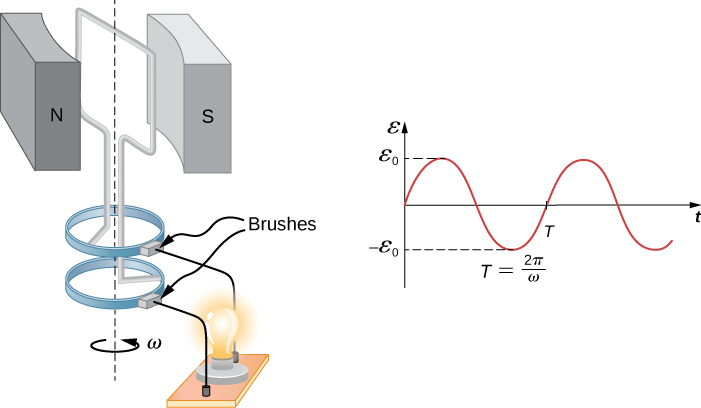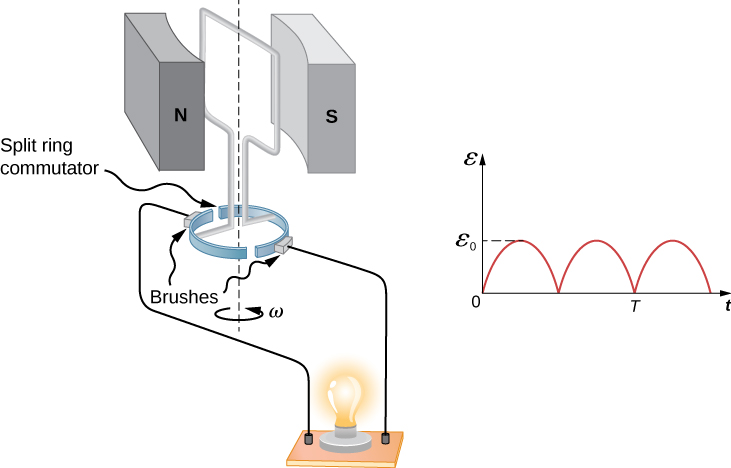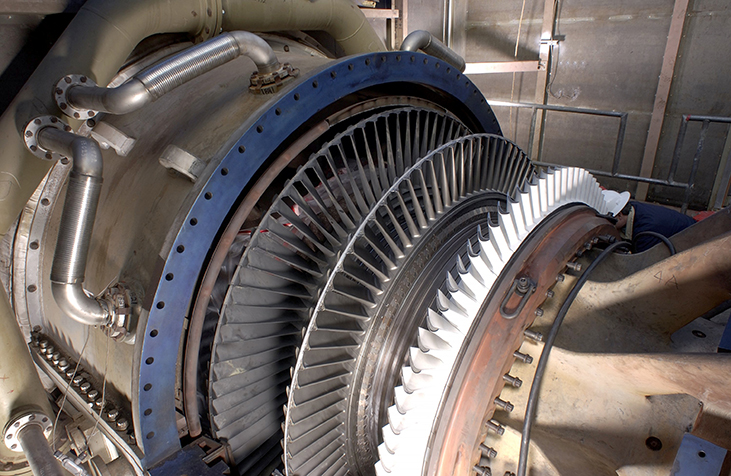| << Chapter < Page | Chapter >> Page > |
This expression is valid, but it does not give emf as a function of time. To find the time dependence of emf, we assume the coil rotates at a constant angular velocity . The angle is related to angular velocity by so that
Now, linear velocity v is related to angular velocity by Here, so that and
Noting that the area of the loop is and allowing for N loops, we find that
This is the emf induced in a generator coil of N turns and area A rotating at a constant angular velocity in a uniform magnetic field B . This can also be expressed as
where
is the peak emf, since the maximum value of . Note that the frequency of the oscillation is and the period is [link] shows a graph of emf as a function of time, and it now seems reasonable that ac voltage is sinusoidal.

The fact that the peak emf is makes good sense. The greater the number of coils, the larger their area, and the stronger the field, the greater the output voltage. It is interesting that the faster the generator is spun (greater ), the greater the emf. This is noticeable on bicycle generators—at least the cheaper varieties.
[link] shows a scheme by which a generator can be made to produce pulsed dc. More elaborate arrangements of multiple coils and split rings can produce smoother dc, although electronic rather than mechanical means are usually used to make ripple-free dc.

In real life, electric generators look a lot different from the figures in this section, but the principles are the same. The source of mechanical energy that turns the coil can be falling water (hydropower), steam produced by the burning of fossil fuels, or the kinetic energy of wind. [link] shows a cutaway view of a steam turbine; steam moves over the blades connected to the shaft, which rotates the coil within the generator. The generation of electrical energy from mechanical energy is the basic principle of all power that is sent through our electrical grids to our homes.

Generators illustrated in this section look very much like the motors illustrated previously. This is not coincidental. In fact, a motor becomes a generator when its shaft rotates. Certain early automobiles used their starter motor as a generator. In the next section, we further explore the action of a motor as a generator.
Generators convert mechanical energy into electrical energy, whereas motors convert electrical energy into mechanical energy. Thus, it is not surprising that motors and generators have the same general construction. A motor works by sending a current through a loop of wire located in a magnetic field. As a result, the magnetic field exerts torque on the loop. This rotates a shaft, thereby extracting mechanical work out of the electrical current sent in initially. (Refer to Force and Torque on a Current Loop for a discussion on motors that will help you understand more about them before proceeding.)

Notification Switch
Would you like to follow the 'University physics volume 2' conversation and receive update notifications?